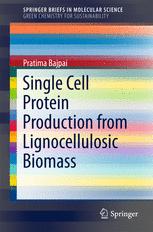

Most ebook files are in PDF format, so you can easily read them using various software such as Foxit Reader or directly on the Google Chrome browser.
Some ebook files are released by publishers in other formats such as .awz, .mobi, .epub, .fb2, etc. You may need to install specific software to read these formats on mobile/PC, such as Calibre.
Please read the tutorial at this link: https://ebookbell.com/faq
We offer FREE conversion to the popular formats you request; however, this may take some time. Therefore, right after payment, please email us, and we will try to provide the service as quickly as possible.
For some exceptional file formats or broken links (if any), please refrain from opening any disputes. Instead, email us first, and we will try to assist within a maximum of 6 hours.
EbookBell Team

4.4
92 reviewsThis book focuses on bioconversion of lignocellulosic residues into single-cell protein, which offers an alternative to conventional proteins (such as soybean meal, egg protein or meat protein in animal feed) that is not affected by the climate. It provides an overview of the general uses of lignocellulosic residues and their bioconversion into single-cell protein using microorganisms, as well as the recovery of the valuable by-products. It also explores the benefits and potential drawbacks of single-cell protein, with an emphasis on the economic advantages of such processes. Given its multidisciplinary scope, the book represents a valuable resource for academics and industry practitioners interested in the production of single-cell protein from lignocellulosic residues.